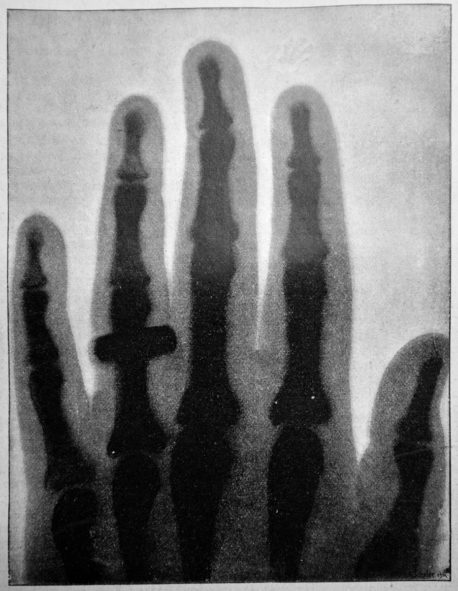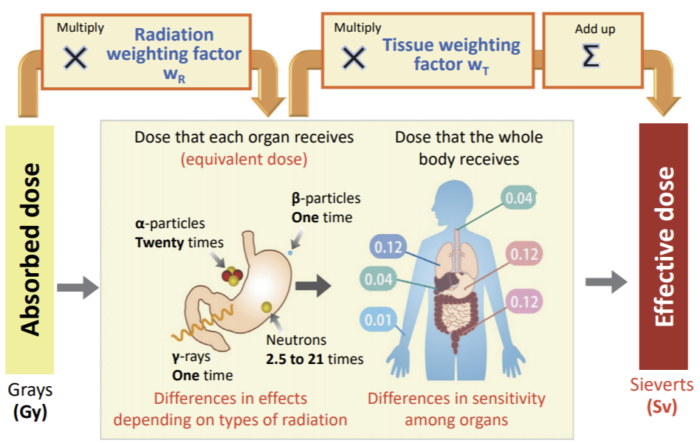Radiation Biology (1/5): On the Trail of Ionising Radiation
The discovery of X-rays triggered an explosion of interest. The euphoria was, however, tempered as more and more information became known about the side effects. Radiation biology examines how radiation acts on cells and tissues.
People are permanently surrounded by substances emitting ionising radiation. They occur naturally in the ground, building materials and the air that we breathe. Even when eating and drinking, we absorb radioactive substances, such as potassium, which itself contains radioactive potassium-40. In addition, artificially generated ionising radiation, used for example in applications in research, industry and medicine, also contributes to radiation exposure. Consequently, mankind is constantly under the influence of ionising radiation.

The interaction of ionising radiation with matter (the human body) can cause damage to the organism, irrespective of whether the radiation is of natural or artificial origin. The amount of energy absorbed by the cells and the duration of the irradiation are the key factors here.
The birth of radiation biology
The discovery of X-rays in 1895 was a sensation. The fact that it was now possible to examine inside the human body without having to cut it open revolutionised medicine. Soon, however, the people operating the X-ray equipment began to complain about side effects such as ulcers. Subsequently, medical and biological experiments were used to determine the causes of these processes – the birth of radiation biology.
We now know that both X-rays and radiation from radioactive substances are two types of ionising radiation. This means that this radiation can transfer energy to tissue or cells, resulting in the ionisation of biologically critical molecules. Under certain circumstances, molecules may no longer function correctly or in indeed function at all. The various types of radiation each exhibit different potential for influencing biological processes. Moreover, sensitivity to radiation varies from tissue type to tissue type. In humans, a distinction is made between the epithelium, connective and supporting tissue, muscle tissue and nerve tissue.
The first radiobiological experiments were performed on animals. Fundamentally, the findings from these experiments still apply today. For example, that the “quantity of radiation”, which we now refer to as the dose, determines the effects to be expected.
The dose as a measure of radiation exposure for humans
When a person is exposed to a radiation field, the radiation acts on the body by releasing its energy into the body: It is said that the person has an accumulated dose. Doses can be expressed in grays or sieverts. The absorbed dose of energy is expressed in grays or milligrays and corresponds to the energy absorbed per kilogram of body tissue. On the other hand, the effective dose, which is expressed in sieverts, relates to the sum of the absorbed contributions of energy per kilogram of body tissue, multiplied by weighting factors that take into account the biological effect of the different types of radiation as well as the varying radiation sensitivity of individual organs and tissues. Since a dose of one sievert is a very large value, the doses that usually occur are often expressed in millisieverts (one thousandth of a sievert, also written as mSv) or microsieverts (one millionth of a sievert, also written as μSv).

Another significant finding of radiation biology was the influence of ionising radiation on somatic body cells and cells from the germline (reproductive cells). These cells differ in the fact that a gamete can originate from a cell in the germline but cannot originate from a somatic cell.
This distinction is particularly important for fertility, as was shown in radiation experiments with animals.
If the genitals were excluded from the irradiation, the radiation effect was limited to the animal concerned, the offspring were not affected. By contrast, if only the genitals were irradiated, the animals survived the experiment without, in the optimum case, any radiation effects whatsoever. The consequence was impairment of their fertility: they had fewer offspring, and the offspring also manifested health deficits.
Use of radiation biology to support radiation protection
The objective of radiation protection is to protect people and the environment as effectively as possible from the negative effects of ionising radiation and to prevent damage. However, this can only occur if the biological processes that occur in irradiated and non-irradiated cells are known.
In this sense, radiation biology is a tool used in radiation protection: It provides the scientific basis for radiation protection so that it can optimally fulfil its tasks in practice.
This is the first of five articles on radiation biology. The second part explains the effects of high doses on the body.

